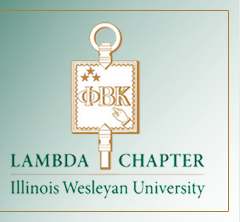Article Title
Movement I from Lamentationes
Graduation Year
2016
Abstract
This piece is a setting of the first poem in the book of ʼêḵāh from the Hebrew Bible (the book of Lamentations in the Christian Old Testament). Setting the text in its original language has had two primary advantages: (1) it preserved euphony and other poetic subtleties and (2) it left the poetry's original cultural context intact.
I use harmonic rhetoric to imitate several features of the text. One of them is the so-called "tragic reversal," a device illustrated by the lines cited above, where a reversal of fortune is expressed through the contrast between the first colon and the second colon of a given line. I imitate this device by using contrasting harmonies for the two parts of the line. For example, in the first line I use dark minor chords to set the first colon and a bright, unrelated major chord to set the second colon.
I imitate the essential structural device of the poem as well: the Hebrew acrostic. By beginning each three-line verse with successive letters of the Hebrew alphabet, the poet methodically addresses every facet of grief "A through Z," as it were. I imitate this structural device by moving through every possible key area in a controlled order throughout the piece.
Through these and other rhetorical techniques, my intention has been to create a musical work that imitates the pathos, logos, and ethos of the Hebrew poetry. The end result is a composition that, I hope, brings back to life a text written in a language that has been dead for millennia. The work seeks to translate the poetry of ʼêḵāh directly from Classical Hebrew into a modern idiom of Western music, accessible to contemporary audiences.
Recommended Citation
McDunn, Timothy W.
(2016)
"Movement I from Lamentationes,"
CrissCross: Vol. 4:
Iss.
1, Article 8.
Available at:
https://digitalcommons.iwu.edu/crisscross/vol4/iss1/8
Included in
Arts and Humanities Commons, Life Sciences Commons, Physical Sciences and Mathematics Commons, Social and Behavioral Sciences Commons

